Abstract
A Janthinobacterium sp. and an actinomycete, both capable of mineralizing 2,4-dinitrophenol (DNP), were used to construct a consortium to mineralize DNP in nonaxenic bench-scale sequencing batch reactors (SBRs). Average Km values for DNP mineralization by pure cultures of the Janthinobacterium sp. and the actinomycete were 0.01 and 0.13 μg/ml, respectively, and the average maximum specific growth rate (μmax) values for them were 0.06 and 0.23/h, respectively. In the presence of NH4Cl, nitrite accumulation in pure culture experiments and in the SBRs was stoichiometric to initial DNP concentration and the addition of nitrogen enhanced DNP mineralization in the SBRs. Mineralization of 10 μg of DNP per ml was further enhanced in SBRs by the addition of glucose at concentrations of 100 and 500 μg/ml but not at 10 μg/ml. Possible mechanisms for this enhanced DNP mineralization in SBRs were suggested by kinetic analyses and biomass measurements. Average μmax values for DNP mineralization in the presence of 0, 10, 100, and 500 μg of glucose per ml were 0.33, 0.13, 0.42, and 0.59/h, respectively. In addition, there was greater standing biomass in reactors amended with glucose. At steady-state operation, all SBRs contained heterogeneous microbial communities but only one organism, an actinomycete, that was capable of mineralizing DNP. This research demonstrates the usefulness of supplemental substrates for enhancing the degradation of toxic chemicals in bioreactors that contain heterogeneous microbial communities.
Full text
PDF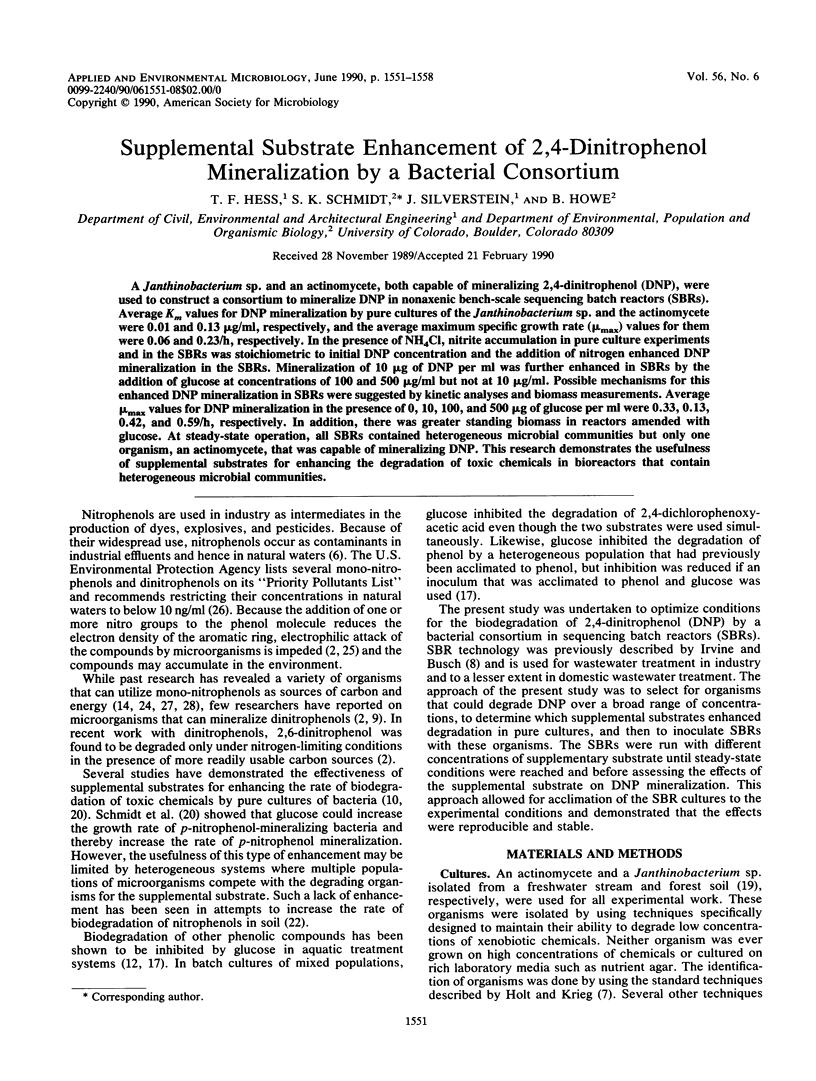
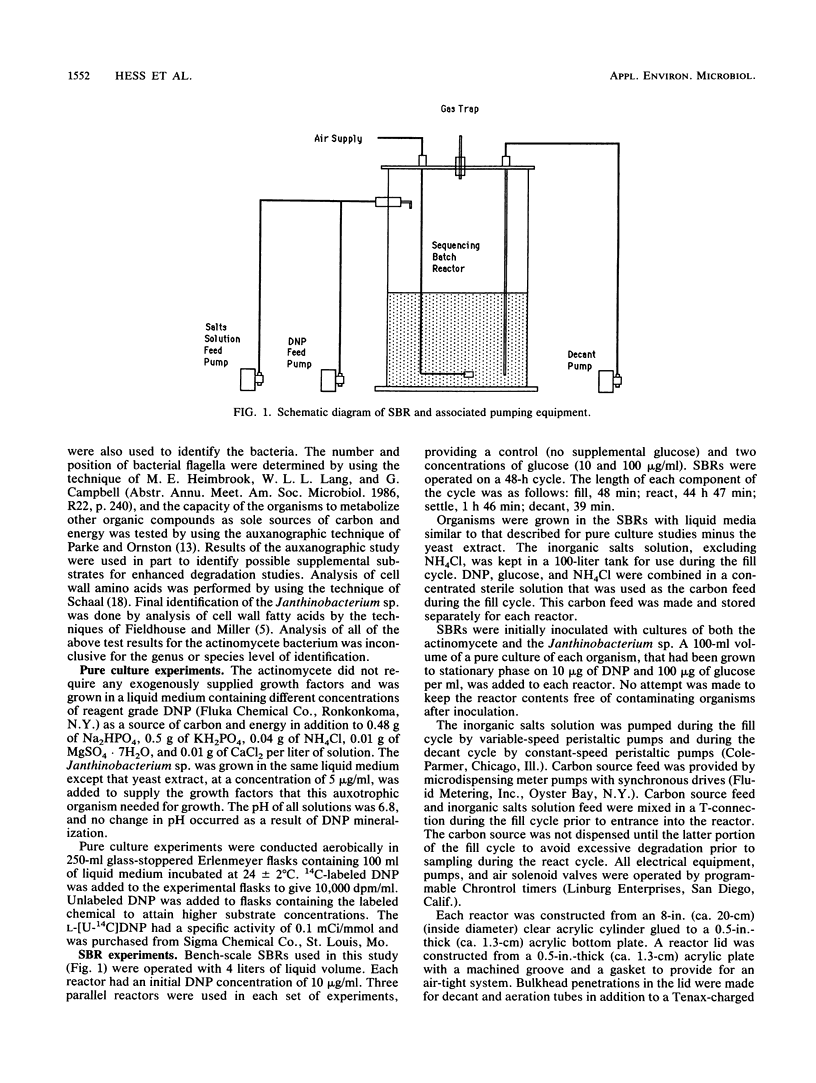
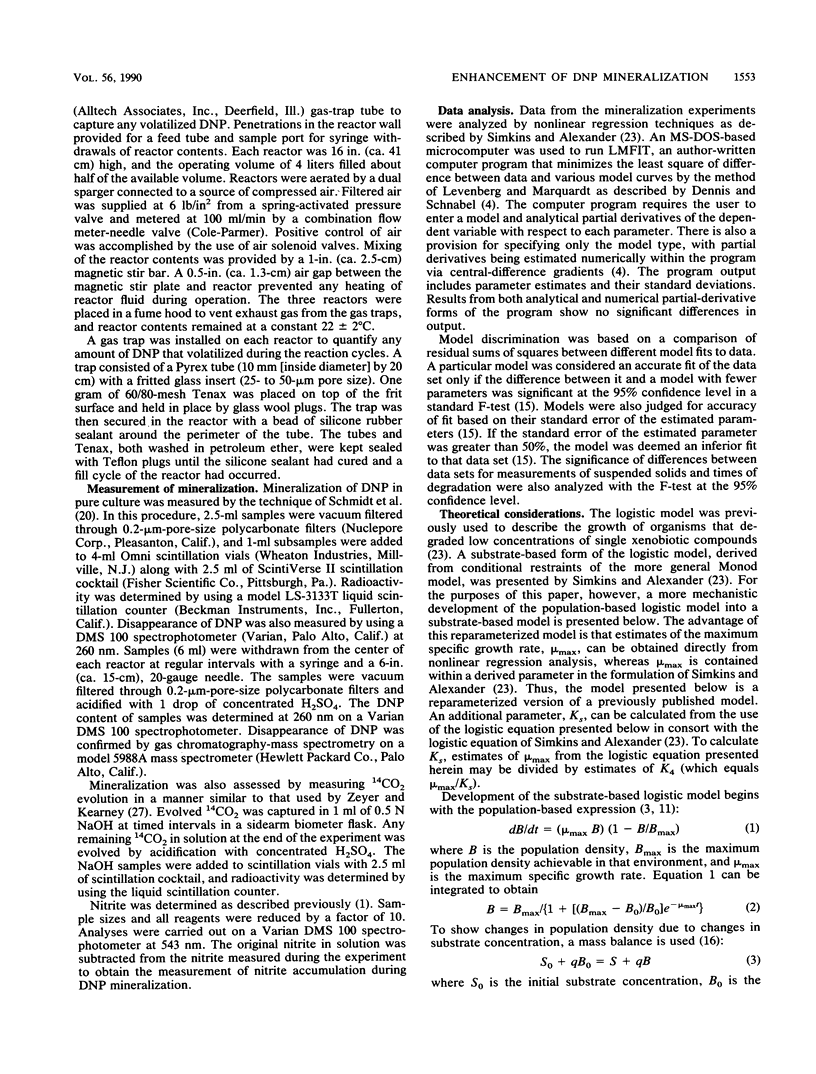
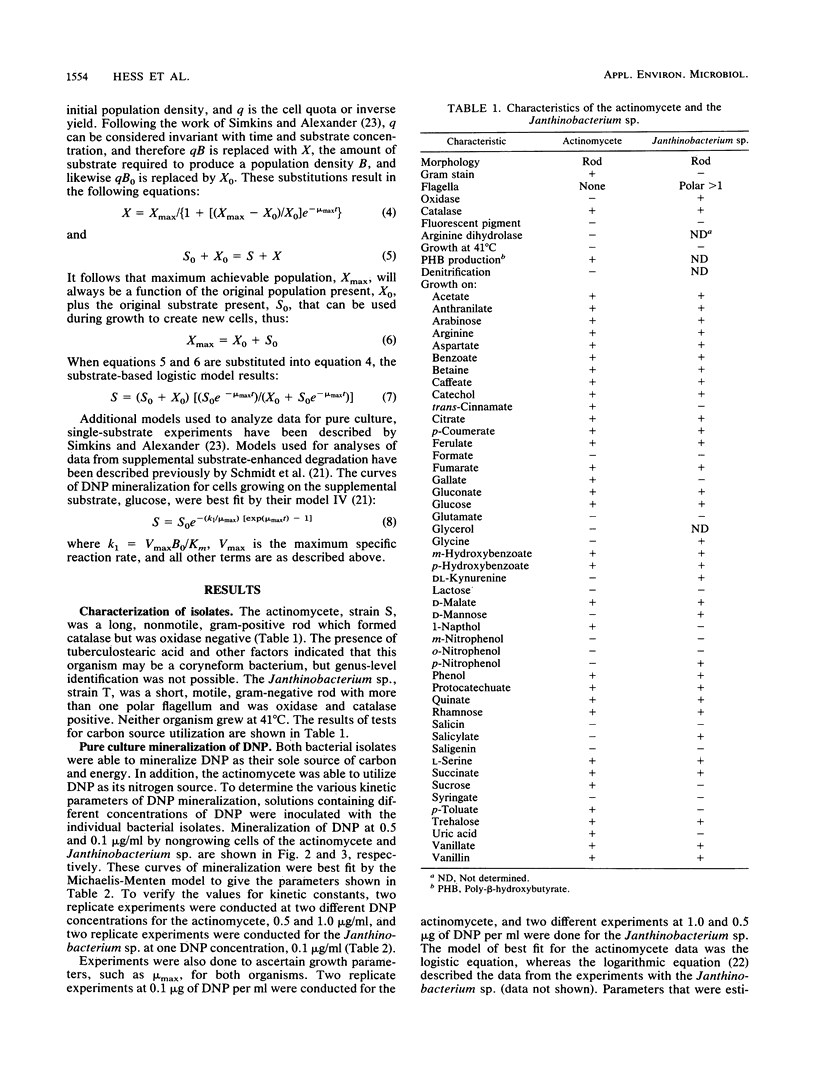

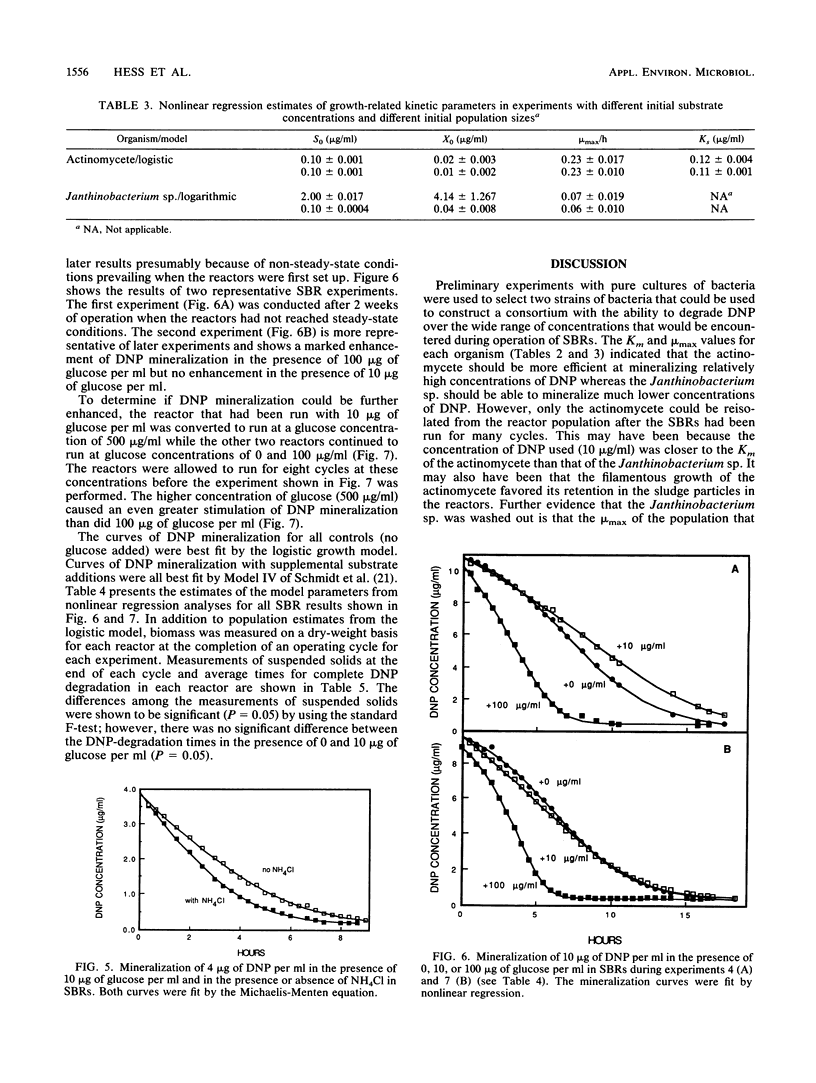
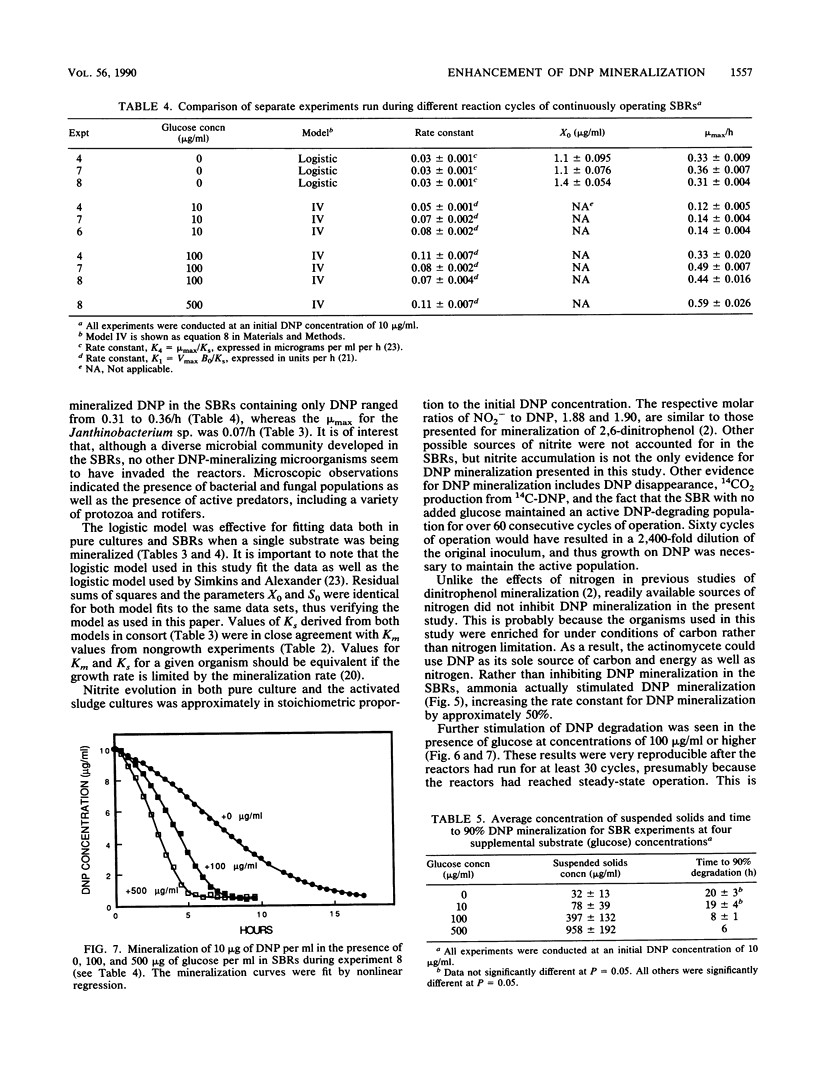
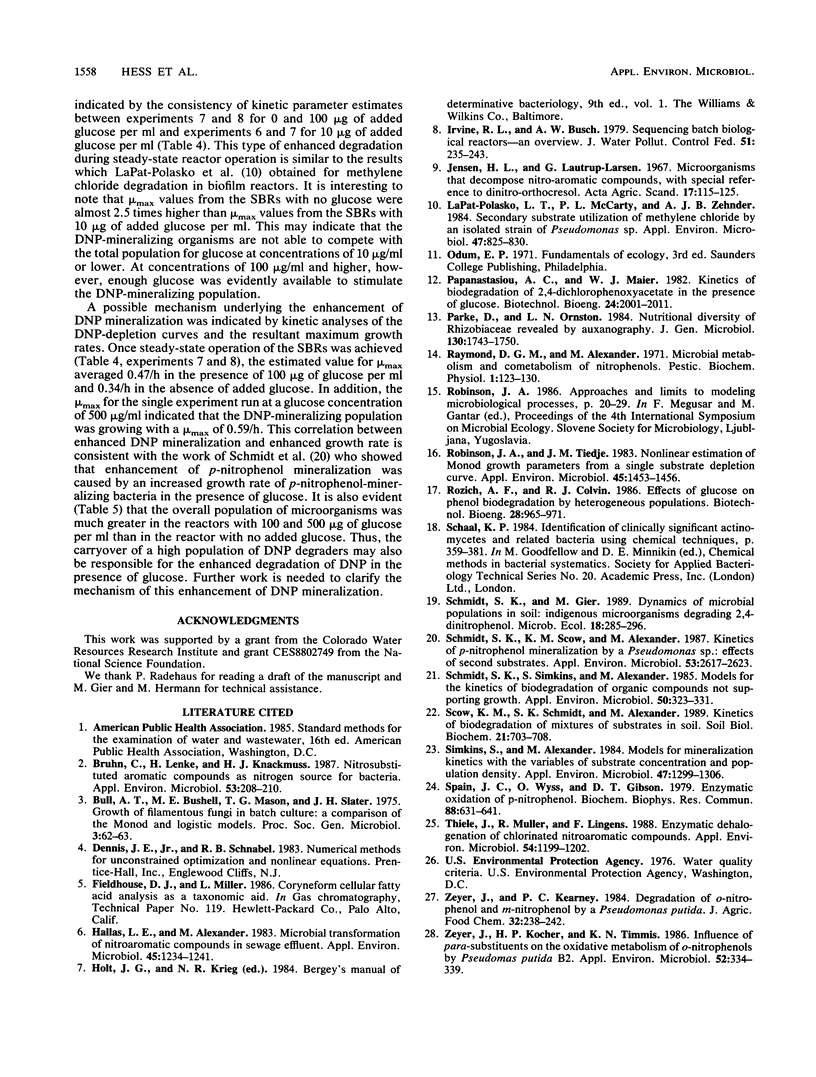
Selected References
These references are in PubMed. This may not be the complete list of references from this article.
- Bruhn C., Lenke H., Knackmuss H. J. Nitrosubstituted aromatic compounds as nitrogen source for bacteria. Appl Environ Microbiol. 1987 Jan;53(1):208–210. doi: 10.1128/aem.53.1.208-210.1987. [DOI] [PMC free article] [PubMed] [Google Scholar]
- Hallas L. E., Alexander M. Microbial transformation of nitroaromatic compounds in sewage effluent. Appl Environ Microbiol. 1983 Apr;45(4):1234–1241. doi: 10.1128/aem.45.4.1234-1241.1983. [DOI] [PMC free article] [PubMed] [Google Scholar]
- LaPat-Polasko L. T., McCarty P. L., Zehnder A. J. Secondary substrate utilization of methylene chloride by an isolated strain of Pseudomonas sp. Appl Environ Microbiol. 1984 Apr;47(4):825–830. doi: 10.1128/aem.47.4.825-830.1984. [DOI] [PMC free article] [PubMed] [Google Scholar]
- Robinson J. A., Tiedje J. M. Nonlinear estimation of Monod growth kinetic parameters from a single substrate depletion curve. Appl Environ Microbiol. 1983 May;45(5):1453–1458. doi: 10.1128/aem.45.5.1453-1458.1983. [DOI] [PMC free article] [PubMed] [Google Scholar]
- Schmidt S. K., Scow K. M., Alexander M. Kinetics of p-nitrophenol mineralization by a Pseudomonas sp.: effects of second substrates. Appl Environ Microbiol. 1987 Nov;53(11):2617–2623. doi: 10.1128/aem.53.11.2617-2623.1987. [DOI] [PMC free article] [PubMed] [Google Scholar]
- Schmidt S. K., Simkins S., Alexander M. Models for the kinetics of biodegradation of organic compounds not supporting growth. Appl Environ Microbiol. 1985 Aug;50(2):323–331. doi: 10.1128/aem.50.2.323-331.1985. [DOI] [PMC free article] [PubMed] [Google Scholar]
- Simkins S., Alexander M. Models for mineralization kinetics with the variables of substrate concentration and population density. Appl Environ Microbiol. 1984 Jun;47(6):1299–1306. doi: 10.1128/aem.47.6.1299-1306.1984. [DOI] [PMC free article] [PubMed] [Google Scholar]
- Spain J. C., Wyss O., Gibson D. T. Enzymatic oxidation of p-nitrophenol. Biochem Biophys Res Commun. 1979 May 28;88(2):634–641. doi: 10.1016/0006-291x(79)92095-3. [DOI] [PubMed] [Google Scholar]
- Thiele J., Müller R., Lingens F. Enzymatic dehalogenation of chlorinated nitroaromatic compounds. Appl Environ Microbiol. 1988 May;54(5):1199–1202. doi: 10.1128/aem.54.5.1199-1202.1988. [DOI] [PMC free article] [PubMed] [Google Scholar]
- Zeyer J., Kocher H. P., Timmis K. N. Influence of para-substituents on the oxidative metabolism of o-nitrophenols by Pseudomonas putida B2. Appl Environ Microbiol. 1986 Aug;52(2):334–339. doi: 10.1128/aem.52.2.334-339.1986. [DOI] [PMC free article] [PubMed] [Google Scholar]


